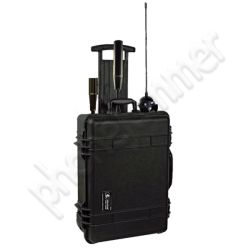How It Works
A phone jammer transmits low-powered radio
signals to cut off communications between cell phones and cell base stations. It
does not interfere with any communications other than cellular phones within the
defined regulated zone. Upon activating a phone jammer, all idle phones will
indicate "NO NETWORK." Incoming calls are blocked as if the cellular hand phone
were off. When the phone jammer is turned off, all cell hand phones will
automatically re-establish communications and provide full service. The jamming
area is influenced by the location of the cell tower and the obstacles between
cell tower and the cellular jammer. It means that in normal conditions, if the
distance is close between the cell tower and the phone jammer, it will have less
jamming area. Likewise, if there are obstacles and walls between the cell tower
and the cellular phone, the jammer will give more jamming area.
Provides Acoustics Isolation
A phone jammer provides the
ultimate solution in any area where cellular communications frequently cause
nuisance either by loud incoming call rings or resulting loud telephone
conversations. Examples of places where cell phones can be disruptive include:
- Public transport (trains, buses, etc.)
- Theatres (movie theatres, concert halls, playhouses, opera houses, etc.)
- Lecture rooms
- Libraries
- Museums
- Restaurants
- Schools and universities (classrooms, lecture halls, auditoriums, etc.);
cell phone jammers can prevent students from SMS cheating
- Places of worship (mosques, shrines, churches, temples, etc.)
- Country clubs
- Sporting events
- Recording studios
- TV stations, radio stations, etc.
|
Protects Against Breach of Security
Policy
Cell phones are innocent-looking communication devices that
enable continuous transmission of voice/data. In secured places, where policy
does not warrant the use of mobile phones, it is almost impossible to detect a
person conducting cell phone conversations or to spot other such misuse,
especially when mobile phones are very small. Examples of places where cell
phone use may not be allowed include:
- Businesses (conferences, board of directors rooms, seminars, meeting rooms)
- Government buildings and government complexes
- Law enforcement facilities
- Police stations
- Drug enforcement facilities
- Prison facilities, jails, etc.
- Courts of law and court houses
- Embassies
- Military installations, military complexes, and military training centres
|
Addresses Safety Issues
In
accordance with fire code regulations, mobile phones must be switched "off" in
any area that has a potentially explosive atmosphere, including petrol service
stations where sparks could cause an explosion or fire. These preventable
accidents occur more frequently than most people realize. Areas where mobile
phone use is prohibited include:
- Petrol/ gas stations
- Oil refineries and storage facilities
- Offshore oil platforms
- Petrol/gas transportation vehicles
- Chemical refineries and storage facilities
- Chemical transportation vehicles
- Laboratories
- Fireworks factories
- Liquefied petroleum (LPG) refineries and storage facilities
- LPG transportation vehicles
- Natural gas refineries and storage facilities
- Natural gas transportation vehicles
- Power plants
- Industrial plants (or anywhere the air contains chemicals or particles such
as grain, dust, or metal powders)
- Hospitals
|



-236x51.png)













